Carex: [Cultivation, Associations, Pests and Diseases]
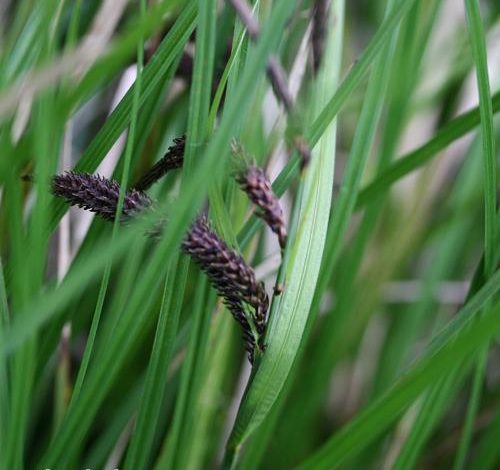
Important points when planting Carex
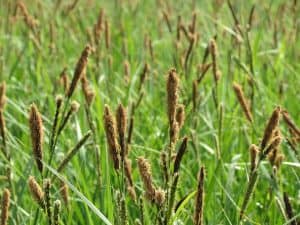 Where to sow? In full light. It needs sunlight, but it also grows in partial shade.
Where to sow? In full light. It needs sunlight, but it also grows in partial shade.- When? In spring.
- How do we prepare the land? Deep and moist soils. With substrate with good drainage conditions.
- How do we water? With drip or localized irrigation.
- How often do we water?: In summer, daily. The rest of the year spaced irrigation. It does not resist droughts.
- Plagues and diseases? Very resistant to pests, it can be affected by fungi.
Evergreen plants, the carex are a genus of plants that belongs to the sedge family, constantly producing new leaves while the older ones wither. The flowers appear grouped in inflorescences that are spike-shaped.
When to sow the Carex?
Spring is the best season to sow carex, since the plant can be divided to have new specimens, or its seeds can be sown in individual pots with a universal growing substrate. Carex produce numerous seeds that spontaneously re-seed.
Where to do it?
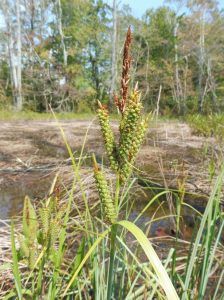 Carex are grasses that should be grown outdoors, either in full sun or semi-shade and can be planted wherever you prefer, however, it is necessary to assign them a very cool place with enough light.
Carex are grasses that should be grown outdoors, either in full sun or semi-shade and can be planted wherever you prefer, however, it is necessary to assign them a very cool place with enough light.
They grow quickly and in any corner, so they are recommended as species to embellish those holes that have been left empty in the gardens, or to give them a more rustic touch, but without losing elegance.
In order to appreciate all the attractiveness and elegance of this carex’s fine, silvery pendulous foliage, some horticulturists and gardeners recommend planting it in a tall pot.
Carex grow in virtually all climatic zones of the world, but it has been shown that it does not occur in most of Africa and Arabia. Thus, they can be planted in gardens where rainfall is low, or where temperatures are cold.
These plants are well suited for use around ponds and streams, in moist undergrowth and in shady, moist garden areas.
How to prepare the land?
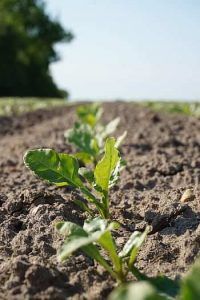 Although carex grow in all kinds of soils; limestone or siliceous, it requires deep and humid soils, or waterlogged, and prefers those that are not too poor in nutrients.
Although carex grow in all kinds of soils; limestone or siliceous, it requires deep and humid soils, or waterlogged, and prefers those that are not too poor in nutrients.
It is important to prepare the substrate with good drainage conditions so that the humidity helps the development of the plant, but take the necessary care to avoid waterlogging.
Depending on the variety, carex can be planted in both moist areas and drier soil in the garden.
For example, the carex pendula variety, a native plant whose green leaves can reach a meter in height, needs a very humid environment and shade for its cultivation.
To plant in dry soils, there are the varieties of carex buchananii, with reddish leaves, and carex testacea, which has green foliage, but as it faces the sun, it acquires a very intense orange hue.
How do we water the Carex?
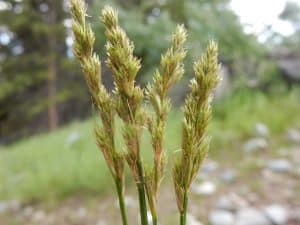 Carex are plants that are not very resistant to drought, so if they are planted in the ground, they can be watered daily, especially during the summer, when the weather is very hot and dry.
Carex are plants that are not very resistant to drought, so if they are planted in the ground, they can be watered daily, especially during the summer, when the weather is very hot and dry.
On the contrary, if they are grown in a pot, it is necessary to water them 2-3 times a week, and you can even use the technique of putting a plate under the container and filling it up.
Some types of carex, such as the carex albula variety, do not grow in humid areas and can tolerate periods of drought, so they should be watered moderately, without flooding the soil, but without letting it dry out completely.
In general, it is a plant that withstands periodically or permanently flooded land well, as long as the plant is not more than 20 cm deep.
How do we sow the Carex step by step?
To plant carex, if it is in a flooded area, it can be grown in full sun, although its optimal place is in partial shade or intense shade.
In gardening, it can be planted in areas that are not flooded, but always shady and humid with a planting density of 2-4 plants/m2. Cultivation of carex is simple and, like many grasses, it can be reproduced by dividing the plant.
- Choose a pot, place the substrate that can be of any type, but with great drainage capacity.
- Place fertilizer with special fertilizers for the type of Carex variety that was chosen to plant.
- Starting from the central part of the plant, it is divided into several parts and one that has a root is chosen so that it can reproduce and grow.
- Sow with a depth that does not exceed 20 cm.
- Water abundantly without flooding.
- Locate the plant in a place where it has sun or partial shade.
What favorable associations does it have?
For their plantation, the carex can be associated with other grasses. In gardening they are generally associated with other species such as plants to fill a beautiful composition.
For example, you can plant a conifer like the Pinus Mugo Mops that will add verticality to the composition, together with another conifer such as a Japanese ophiopogon and finally plant the straw-colored carex that will add movement and grace.
What pests and diseases attack Carex?
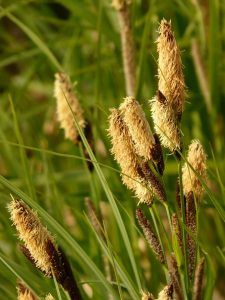 It is a plant very resistant to pests and diseases. However, the important thing is to be very careful with humidity, which could cause fungal problems in carex.
It is a plant very resistant to pests and diseases. However, the important thing is to be very careful with humidity, which could cause fungal problems in carex.
It is important to note that carex are plants that are grown outdoors; therefore, they are susceptible to being attacked by pests and diseases.
For this reason, it is necessary to be very attentive and quickly attend to any symptoms that they may present.
Bibliography and references
- Luceno, Modesto. (1994). Monograph of the genus Carex in the Iberian Peninsula and the Balearic Islands. Editorial CSIC. Madrid Spain.
- Mateo Sanz, Gonzalo. (2013). The plants of the Eastern Iberian System and their environment: Illustrated guide for their identification. Jolube Botanical Consultant and Editor. Jaca-Spain.
- Molina, A.; Acedo, C.; Flames, F. (2006). Observations on the genus Carex in the province of León (NW Spain). Lagascalia. University of Leon. Leon-Spain. Reproduced from: https://idus.us.es/bitstream/handle/11441/54146/Observaciones.pdf?sequence=1&isAllowed=y
- Jimenez Mejias, Pedro; Squire, Martial; Chaparro, Antonio Jesus; Luceno, Modesto. (2007). Chorological novelties of the genus Carex for the Iberian Peninsula. Malacitana Botanical Act. Malaga, Spain. Reproduced from: https://riuma.uma.es/xmlui/bitstream/handle/10630/3703/32.Carex.pdf?sequence=5


![Photo of Marula Tree: [Planting, Care, Harvest, Irrigation and Characteristics]](https://www.complete-gardening.com/wp-content/uploads/2022/08/marula-tree-planting-care-harvest-irrigation-and-characteristics-390x220.jpg)
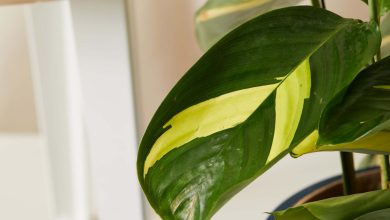
![Photo of Fruit Flies: [Effects, Detection and Treatment]](https://www.complete-gardening.com/wp-content/uploads/2022/08/Como-eliminar-las-moscas-de-la-fruta-300x212-1.jpg)